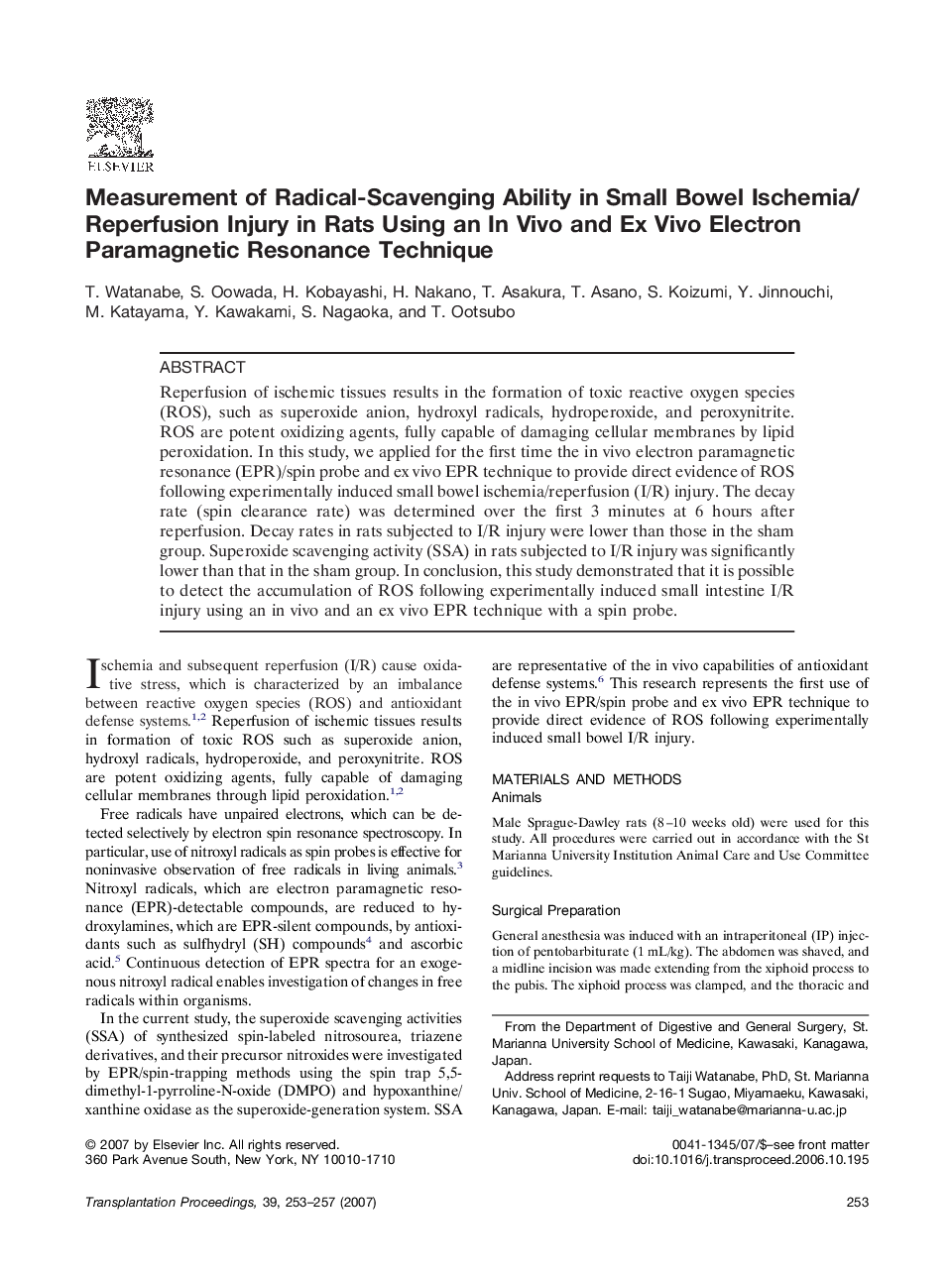| Article ID | Journal | Published Year | Pages | File Type |
|---|---|---|---|---|
| 4262953 | Transplantation Proceedings | 2007 | 5 Pages |
Reperfusion of ischemic tissues results in the formation of toxic reactive oxygen species (ROS), such as superoxide anion, hydroxyl radicals, hydroperoxide, and peroxynitrite. ROS are potent oxidizing agents, fully capable of damaging cellular membranes by lipid peroxidation. In this study, we applied for the first time the in vivo electron paramagnetic resonance (EPR)/spin probe and ex vivo EPR technique to provide direct evidence of ROS following experimentally induced small bowel ischemia/reperfusion (I/R) injury. The decay rate (spin clearance rate) was determined over the first 3 minutes at 6 hours after reperfusion. Decay rates in rats subjected to I/R injury were lower than those in the sham group. Superoxide scavenging activity (SSA) in rats subjected to I/R injury was significantly lower than that in the sham group. In conclusion, this study demonstrated that it is possible to detect the accumulation of ROS following experimentally induced small intestine I/R injury using an in vivo and an ex vivo EPR technique with a spin probe.
